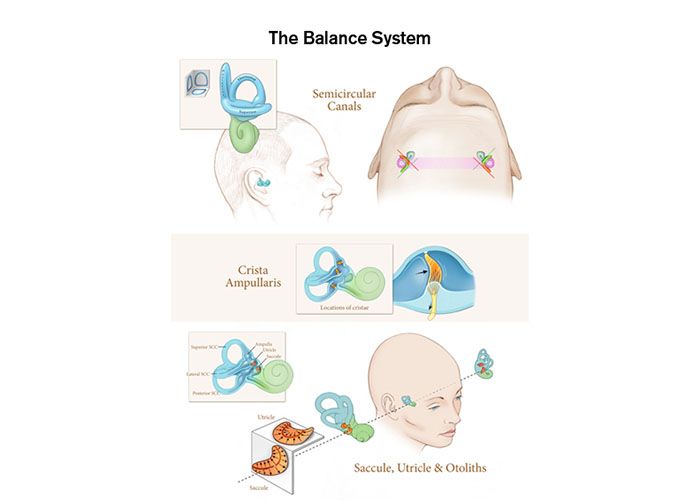Notice of privacy incident at Brigham and Women's Faulkner Hospital Learn More
Header Skipped.
Notice of privacy incident at Brigham and Women's Faulkner Hospital Learn More
Header Skipped.
Otolaryngology:
Ear Conditions
Your sense of balance is made up of the way that your senses, such as sight and hearing, define and experience the interaction of gravity and motion. Your ear is an intricate system of bone, cartilage and otolithic organs—a complex network of canals, semicircular canals, and fluid-filled pouches—all which make up your vestibular system (the balance portions of the inner ear, nerves and brain).
As you move, the fluid in your otolithic organs moves with you and contributes to your brain's assessment of balance. Likewise, the semicircular canals assess the sensation of movement, as fluid in the canals moves over highly sensitive hairs within those canals. Dizziness, vertigo, and motion sickness all relate to the sense of balance and equilibrium.
The otolaryngologists at Brigham and Women’s Division of Otolaryngology at Brigham and Women's Faulkner Hospital treat diseases, conditions and dysfunctions that affect balance including dizziness and vertigo, acoustic neuromas, Meniere’s disease, eardrum perforations and tinnitus.
Your sense of balance is maintained by the complex interaction of the following parts of the nervous system.
The symptoms of motion sickness and dizziness occur when the central nervous system receives conflicting messages from the other four systems.
Learn more about vertigo, dizziness, and your sense of balance.

Feeling unsteady or dizzy can be caused by many factors such as poor circulation, inner ear disease, medication usage, injury, infection, allergies, and/or neurological disease. Dizziness is treatable, but it is important for your doctor to help you determine the cause so that the correct treatment is implemented. While each person will be affected differently, symptoms that warrant a visit to the doctor include a high fever, severe headache, convulsions, ongoing vomiting, chest pain, heart palpitations, shortness of breath, inability to move an arm or leg, a change in vision or speech, or hearing loss.
Causes of Dizziness
Causes of Vertigo
Vertigo is a specific type of dizziness in which a patient inappropriately experiences the perception of motion, usually a spinning motion. Vertigo is most often due to an issue with the inner ear.
The common causes of vertigo are (in order):
Videonystagmography or Electronystagmography (VNG/ENG) are diagnostic tests used to evaluate the vestibular system (balance portions of the inner ear, nerve, and brain). When the head is in motion, the inner-ear balance organs send signals to the eye muscles to keep vision in focus. Therefore, eye movements can be used to evaluate the balance system. Specialized video goggles with infrared cameras, are used to measure eye movements. Each ear canal is irrigated with small amounts of warm and cool air (caloric test) as the patient lies on an examination table. The air causes a temperature change that creates eye movements (nystagmus) that can be measured and compared for each ear. Information obtained from the ENG, along with information from other clinical tests, can help make a diagnosis and recommendations for treatment.
You will receive a thorough diagnostic examination to evaluate if you have a balance disorder and determine what course of treatment is needed. Careful monitoring and the involvement of an experienced otolaryngologist are important to the successful outcome for patients with ear, nose and throat disorders and conditions.
If you are having surgery or a procedure, you will likely be scheduled for a visit to the Weiner Center for Preoperative Evaluation for pre-operative information and tests.
The day of surgery, you will be taken care of in the operating room by otolaryngologist, anesthesiologists and nurses who specialize in surgery for patients with balance disorders. After surgery, you will go to the post-surgical care unit where you will receive comprehensive care by experienced surgical and nursing staff.
Brigham and Women's Faulkner Hospital provides a multidisciplinary approach to patient care by collaborating with colleagues who have extensive experience in diagnosing and treating ear, nose and throat disorders and conditions. In addition, patients have full access to Brigham and Women's world-renowned academic medical community, with its diverse specialists, and state-of-the-art facilities.
Offering comprehensive medical, surgical and psychiatric care as well as complete emergency, ambulatory and diagnostic services to residents of southwest Boston and the surrounding suburbs.
Learn more about BWFH